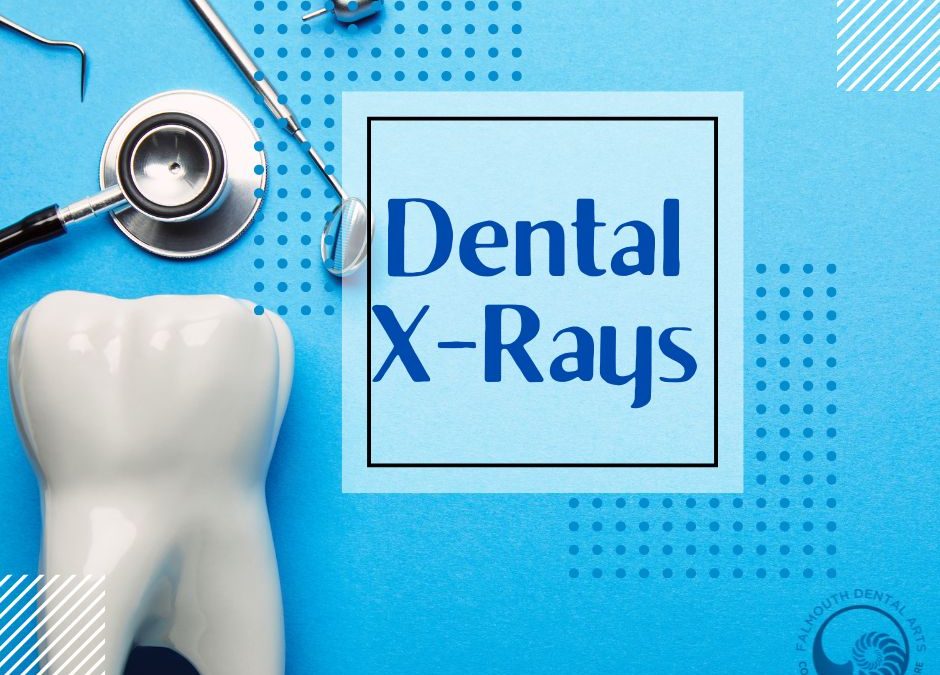
May 1, 2024
You’ve come in for a cleaning and everything looks good, so why do you need a dental x-ray? Great question! Dental x-rays provide an in-depth and accurate view of your teeth and jaw and are an essential tool for preventative care. With up-to-date x-rays, Dr. Brunacini and Dr. Karagiorgos have an enhanced opportunity to identify any potential problems and diagnose dental conditions. The sooner we can treat potential problems or conditions, oftentimes the less invasive and less expensive it will be for you! At FDA, we want our patients to be fully informed when they make decisions about their oral health care and dental x-rays help support that goal. To help inform you more about the importance of dental x-rays, here are three commonly asked questions:
How often should I get dental x-rays?
At FDA we recommend our patients receive an x-ray at their first appointment and then once a year thereafter. Our digital x-ray technology uses a very low dose of radiation already, but this treatment schedule helps us to further minimize any risks.
What are digital x-rays?
We offer digital x-rays at FDA, which is a type of x-ray where digital sensors are used instead of traditional film. To perform digital x-rays, electric sensors are placed in the patient’s mouth. The sensors are connected to a computer by a small wire. The x-ray beam is sent through the teeth and into the sensor. The image can then be viewed immediately on a computer screen during an appointment. Compared with traditional x-rays, digital x-rays reduce radiation exposure by 70-80%. We also find that digital x-rays greatly support patient education by providing a clear image of a patient’s mouth and potential problem areas.
What are CBCT 3D x-rays?
To improve our patients’ experience FDA also offers 3D imaging. Using a CBCT 3D imaging machine, a scanner rotates around a patient’s head, collecting multiple images in rapid succession. These images are then pieced together using a software program to create an extremely clear 3D panoramic view of the mouth and jaw. Often referred to as 3D imaging, CBCT 3D x-rays provide a more thorough and complete view of the head, mouth, and neck prior to performing any dental treatment, especially oral surgery. CBCT scans can also assist us in planning for root canals and placing dental implants. While 3D imaging won’t replace our typical bitewing x-rays, it is an additional tool that helps to diagnose areas of concern or when planning dental implants.
If you have more questions about dental x-rays or if it’s been more than a year since you received them, please give us a call. We’re always happy to answer your questions and can help schedule your next appointment!
Oct 23, 2017
We often associate X-rays with broken bones, and because of this we think of them as being part of diagnostic rather than preventative medicine. In dentistry, however, it’s different. Dental X-rays play an invaluable role in detecting problems before they become major and are an important tool that we use to judge the progress of ailments.
You’re familiar with the lead vest and being asked to bite down on various shaped pieces of plastic. If you’ve ever wondered what these methods are, here is a rundown of each type of dental X-ray and what each accomplishes:
Intraoral
Bite-wing

- Gives us a view of in between the back teeth – molars and bicuspids
- Assess the health of bone surrounding the teeth
- Used to see cavities
Periapical
- Gives a detailed picture of an entire tooth from root to crown and the surrounding bone
- Used to check for infection (abscess)
Occlusal
- Used frequently in children to view tooth development and placement
- Bird’s eye view showing all of the lower or upper teeth and jaw
Extraoral
Panoramic

- Taken from outside the mouth, they show the teeth, jawbones, and skull
- One image that shows the entire mouth
- This is accomplished by a special machine that moves in a full rotation around your head
- A ‘landscape’ image which shows more anatomical structures than other X-ray techniques
Cephalometric
- An image of the entire side of the head
- Used frequently by orthodontists to assess the position of teeth relative to the skull
CBCT (Cone Beam)
- 3-D image that can be used to evaluate hard and soft tissue prior to treatment
Various X-ray techniques are important for catching many dental ailments before they get worse, such as cavities or gum disease. We recommend having bite-wing x-rays once a year for general maintenance. If more complicated treatment is needed, then different x-rays may be needed. If it’s time for you to have new X-rays, give us a call at 207-781-5900 to make an appointment.
Jan 13, 2016
When we think of dental tools, the first things that come to mind are molds, drills, and scrapers. But the often-overlooked dental X-ray is one of the most important tools in the dentist’s arsenal for maintaining oral health. Since dental X-rays are used to diagnose problems, they are often the first line of defense for dentists to assess what ailments a new patient may have. But dental X-rays are not just for new patients.
Adults with healthy teeth should be getting X-rays of their teeth every 2 to 3 years. Children, however, should have X-rays taken every year since their teeth are constantly growing, which causes rapid changes. As with most everything else, the sooner a problem is detected the easier, and cheaper, it will be to correct and dental X-rays play a huge part in fixing oral health problems. When is the last time you had X-rays of your teeth taken? Call our office today at 207-781-5900 to make your appointment.
dental x-rays



